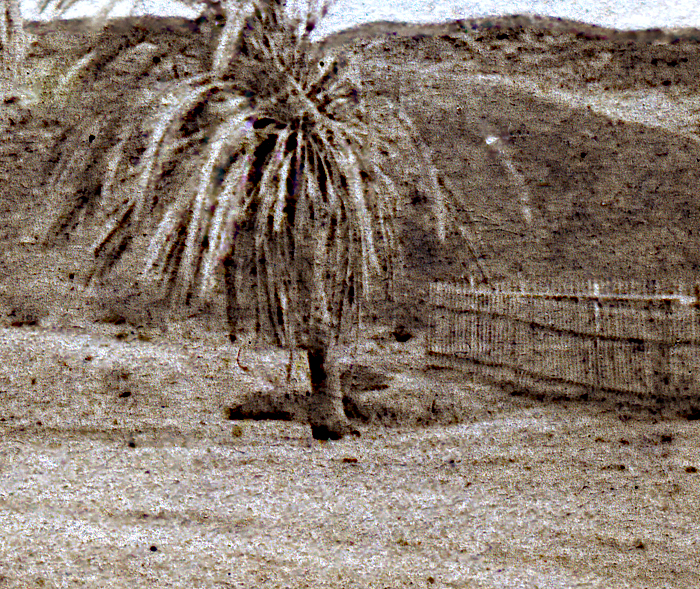Cosoy (Kosa'aay) on:
[Wikipedia]
[Google]
[Amazon]
 Kosa'aay was a
Kosa'aay was a

 Kosa'aay was a
Kosa'aay was a Kumeyaay
The Kumeyaay, also known as Tipai-Ipai or by their historical Spanish name Diegueño, is a tribe of Indigenous peoples of the Americas who live at the northern border of Baja California in Mexico and the southern border of California in the Unit ...
village in what is now Old Town, San Diego.
Etymology
In theKumeyaay language
Kumeyaay (Kumiai), also known as Central Diegueño, Kamia, and Campo, is the Native American language spoken by the Kumeyaay people of southern San Diego and Imperial counties in California. Hinton (1994:28) suggested a conservative estimate of 5 ...
, Kosa’aay translates to “drying out place”. During Spanish settlement, the name was Hispanicized to Cosoy.
Population
The village was made up of thirty to forty families.Settlement
The families in this settlement lived in pyramid-shaped housing structures that were supported by a freshwater spring, wetland vegetation and riparian vegetation along the hillsides. The village provided food and water for thePortolá expedition
thumbnail, 250px, Point of San Francisco Bay Discovery
The Portolá expedition ( es, Expedición de Portolá) was a Spanish voyage of exploration in 1769–1770 that was the first recorded European land entry and exploration of the interior of ...
in 1769 as the crew of the ''San Carlos'' and ''San Antonio'' were dying of scurvy and thirst. Lieut. Miguel Costanso described being guided by the Kumeyaay to the village as ''"they arrived on the banks of a river hemmed in on either bank by a fringe of willows and cottonwoods, very leafy...within a musket-shot from the river they discovered a town or village of the same Indians who were guiding our men. It was composed of various huts of pyramidal shape made of branches and covered with earth....The village was composed of 30 or 40 families. On one side of it there was observed an enclosure made of boughs and trunks of trees. Within this, they explained, they took refuge against attacks from their enemies.”''The Spanish referred to the village as Cosoy, a hispanized name of Kosa'aay.

Spanish Interactions
On May 15th, 1769, theSpanish
Spanish might refer to:
* Items from or related to Spain:
**Spaniards are a nation and ethnic group indigenous to Spain
**Spanish language, spoken in Spain and many Latin American countries
**Spanish cuisine
Other places
* Spanish, Ontario, Can ...
erected a hospital camp on Presidio Hill and occupied the water source of the village as well as stationed a permanent garrison at the village upon the recovery of the members of the expedition party after the overland expedition party arrived at the village the day before.
Founding of San Diego
On July 16th, 1769, aMass
Mass is an intrinsic property of a body. It was traditionally believed to be related to the quantity of matter in a physical body, until the discovery of the atom and particle physics. It was found that different atoms and different ele ...
was held in the dedication of Mission San Diego de Acalá and El Presidio Real de San Diego, the first mission and presidio in Alta California
Alta California ('Upper California'), also known as ('New California') among other names, was a province of New Spain, formally established in 1804. Along with the Baja California peninsula, it had previously comprised the province of , but ...
, and the founding of the settlement of San Diego
San Diego ( , ; ) is a city on the Pacific Ocean coast of Southern California located immediately adjacent to the Mexico–United States border. With a 2020 population of 1,386,932, it is the eighth most populous city in the United States ...
in Old Town, from which the Kumeyaay village of Kosa'aay was incorporated.
Old Town San Diego State Historic Park
The village is acknowledged through the Iipay Tipai Kumeyaay Mut Niihepok Park at the Old Town San Diego State Historic Park, which was developed with the Kumeyaay Diegueño Land Conservancy (KDLC) to enhance visibility of Kumeyaay culture and history in the village's original site. There is also a specialty shop in the state park called Kosay Kumeyaay Market, which sells cultural products from the Kumeyaay and other Yuman groups.{{Cite web, title=Kumeyaay market – Kosay, url=http://kumeyaaymarket.com/, access-date=2022-01-30, language=en-USReferences